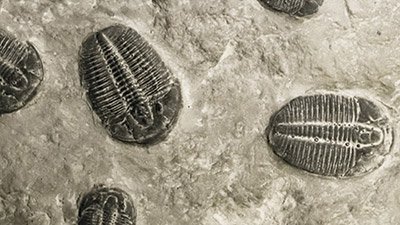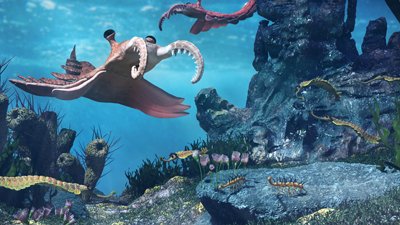Doubt on Complex Species Evolving Slowly
MSNBC: “Ancient animal explosion gets bigger with new finds” New varieties of ancient fossils in the Cambrian rocks cast more doubt on the evolutionary model of complex species evolving slowly over time.
“Oh where, oh where can those ancestors be?” has been the plaintive song of many evolutionists, beginning with Darwin. Darwin recognized the challenge of the Cambrian fossils. If Darwin were correct, the fossil record should show small changes increasing in complexity over long periods of time. On the contrary, the Cambrian Explosion—the sudden appearance of an abundant variety of fossilized complex organisms in the first Cambrian rock layers, which sit directly on Precambrian layers devoid of any possible fossil ancestors of those complex organisms—shows no evidence of evolution between Precambrian and Cambrian organisms.
The new fossils have preserved soft parts like eyes and gills on creatures that are supposedly half a billion years old.
Since Darwin, evolutionists continue to be mystified by the Cambrian Explosion as they dig up more fossils. Paleontologists are finding new varieties of animals. Thirty miles from Canada’s Burgess Shale, the site of many fossil finds, eight new kinds of animals have been discovered in Cambrian rocks.
The new fossils have preserved soft parts like eyes and gills on creatures that are supposedly half a billion years old. One of the finds reported in the journal Geology is a unique kind of “anomalocaridid.” These marine beasts looked like menacing shrimp, and some varieties grew seven feet long.
Paleontologist Nigel Hughes of the University of California–Riverside looks forward to connecting the finds to others around the world: “These [new anomalocaridids] are creating the possibility of linkages between these very rare snapshots.”
What evolutionists will not find in the intricate variety of Cambrian fossils is evidence to link these species back to common ancestors. The biblical history of the worldwide Flood, however, adequately accounts for the Cambrian Explosion. The violent beginning of the Flood as the “fountains of the great deep were broken up” (Genesis 7:11) would have generated enormous tsunamis that swept ocean-floor sediments landwards, catastrophically burying progressively the organisms then living in nearshore, coastal and land environments. Thus the Cambrian layers contain the fossils of the large variety of unusual pre-Flood creatures that were living in the nearshore environment at the time the Flood started but are now extinct.
For more information:
Remember, if you see a news story that might merit some attention, let us know about it! (Note: if the story originates from the Associated Press, Fox News, MSNBC, the New York Times, or another major national media outlet, we will most likely have already heard about it.) And thanks to all of our readers who have submitted great news tips to us.
(Please note that links will take you directly to the source. Answers in Genesis is not responsible for content on the websites to which we refer. For more information, please see our Privacy Policy.)
Recommended Resources

Answers in Genesis is an apologetics ministry, dedicated to helping Christians defend their faith and proclaim the good news of Jesus Christ.
- Customer Service 800.778.3390
- Available Monday–Friday | 9 AM–5 PM ET
- © 2026 Answers in Genesis





